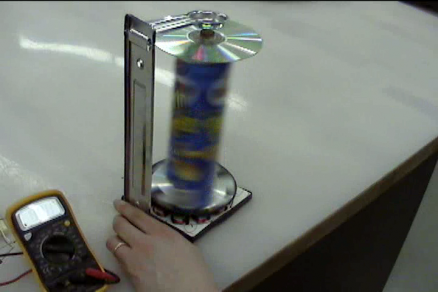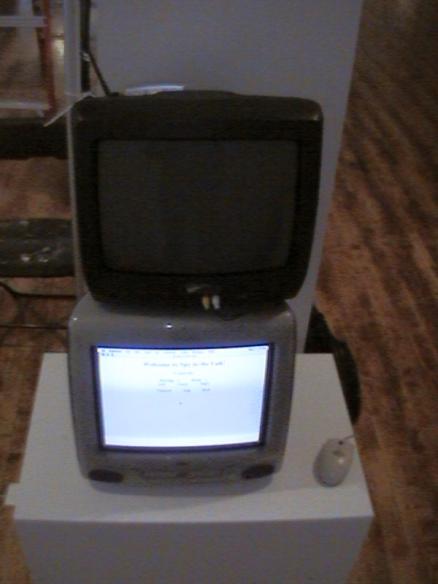Faculty
Hospital Observations
Today's observations in pictures:
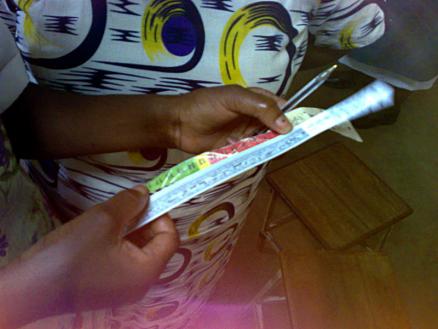 Battle of the Bands: Nurses in Kamuzu Central Hospital's Children's Ward C, which is dedicated to therapeutic nutrition, compare the UNICEF-style MUAC band with the prototype we've created.
Battle of the Bands: Nurses in Kamuzu Central Hospital's Children's Ward C, which is dedicated to therapeutic nutrition, compare the UNICEF-style MUAC band with the prototype we've created.
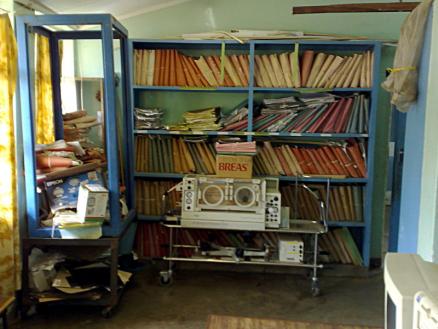 Paper Records: One of the driving forces behind implementing Baobab's patient-manage system in hospitals is to help reduce the problems associated with keeping paper records. Here we see the destination of many records that are only a few years old.
Paper Records: One of the driving forces behind implementing Baobab's patient-manage system in hospitals is to help reduce the problems associated with keeping paper records. Here we see the destination of many records that are only a few years old.
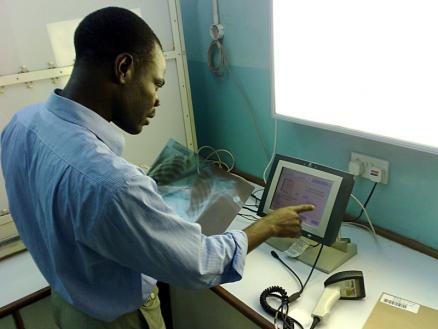 Rashid Demonstrates the X-Ray Process: One of the best-loved features of the Baobab system is its use with tracking and reporting on x-rays.
Rashid Demonstrates the X-Ray Process: One of the best-loved features of the Baobab system is its use with tracking and reporting on x-rays.
- Mike's blog
- Comments
- Read more



- 5194 reads
Hello to the Folks Back Home!
Just a very brief video message from me here in Malawi.
- Mike's blog
- Comments
- Read more



- 4207 reads
The Final Project
The Pringles Wind Turbine (a.k.a. Power Leech or Pleech) is an attempt to turn simple items found at the hardware store and elsewhere into a working low-voltage power supply. It is also the process for creating the turbine, designed so that other people may reproduce the product themselves.
Final paper pdf is attached below. The accompanying website for the instructable is here.
- Mike's blog
- Comments
- Read more



- 5422 reads
Trauma Bear in Video Format
For our midterm project in Yury Gitman's Interactive Major Studio, we made a teddy bear that had a beating heart, lungs, and tons of sensors that felt chest compressions, its physical orientation (with an accelerometer, ) the instruments placed into its mouth, and a magnet to trip the switch we placed in the "paddle" that would restart his heart.
Here is how the trauma bear play testing went down (maddest possible props to Tracy for editing this):
and here's a clip of what we did leading up to this:
- Mike's blog
- Comments
- Read more



- 4223 reads
Early Test Of Phevo Board

This is a sketch I made of what the board might look like in Phevo. Some of the elements important to the game are already present.
Phevo is a game for two players that illustrates principles of genetics, biodiversity, and epidemics in a colorful, competitive arena. It is a little like Battleship for germs.
- Comments



- 10134 reads
Arduino Coding Session
Today, we will run through the basics of Arduino programming. To follow along, please go to the reference section of the Arduino site and step through the functions as we go.
Also, download the files below. They are the Arduino code examples we'll follow once we start making real circuits.
- Comments



- 23721 reads
Game Prototyping
Welcome to the Game Prototyping Workshop!
Making a game can be easier than you think. With a few simple concepts, you can start to piece together a prototype, in any language, that can help you test your mechanics, sketch out an interface, or examine different possibilities for artwork. In this workshop, we'll use Python to:
- Build the "main loop"
- Get input from the user
- Process the rules of the game
- Display the result on screen as graphics
all by making a simple version of Space Invaders! In one short evening!
Let's get started!
Spy in the Lab
During the winter break of 2006-2007, Chris Hennelly and I spent a bunch of free time working on the Spy in the Lab project. The Spy was supposed to go to our friends at Tsinghua University and peek in on all the stuff they were doing. It didn't quite make it for that semester, but we got it working pretty close to 100% by the time we were done with break.
It was sitting in the 10 Years Running Show at the Chelsea Art Museum.

Metal-Head Goat Skull

This is the goat skull that was part of the physical computing final project. Inside its sinuses is a halogen bulb hooked up to a relay. He really lit up the room!
- Comments



- 10745 reads
Journal Square Deli
tags
Copyright Mike Edwards 2006-2009. All content available under the Creative Commons Attribution ShareAlike license, unless otherwise noted.

